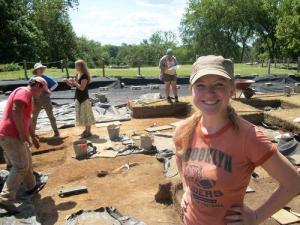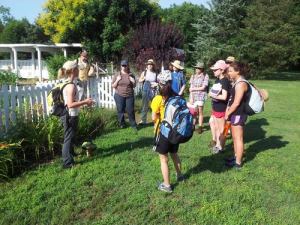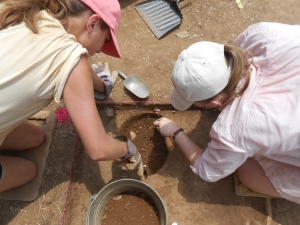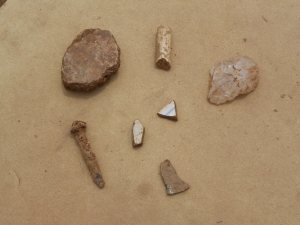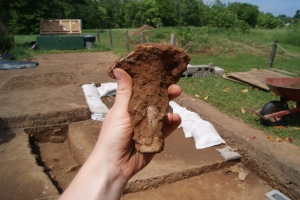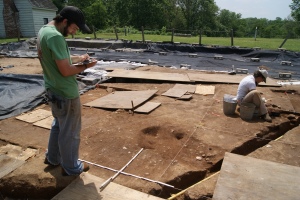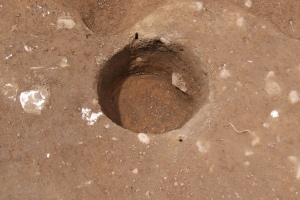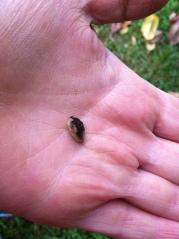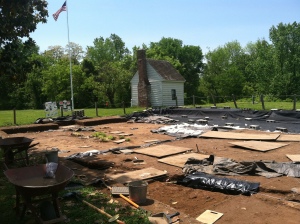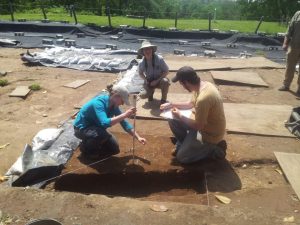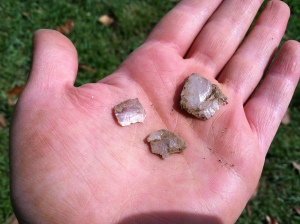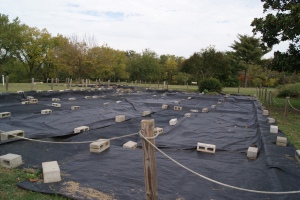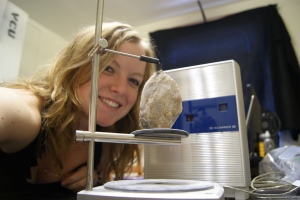My goodness, it has been a LONG time since I have posted anything on this blog! Life has been absolutely crazy since my last update, which I wrote during my final semester at Virginia Commonwealth University. In that post I described how it felt to submit the last of my graduate school applications, and that it seemed as though I was approaching a finish line of sorts as my senior year of college came to a close. Reading that now, I can’t help but shake my head and smile.
In that last semester I completed my undergraduate thesis on prehistory at Ferry Farm (available here), wrapped up my work in the Virtual Curation Laboratory, and accepted admission to the archaeology graduate program at Indiana University of Pennsylvania. Before leaving VCU, I was given the great honor of speaking at my college graduation. It was an amazing experience, and a perfect close to one incredible chapter of my life.
It was not, however, the finish line.
The next chapter began after taking the summer off to travel across Europe with my best friend and fellow archaeologist, Mariana Zechini. Shortly after we returned, she headed south to attend graduate school in Florida, and I made my way north to begin my new life as a graduate student at IUP.
I will not lie, the first year of this program was harder than I ever imagined, and it tested me in ways I never thought it would. The knowledge and experience I have taken from it, however, have been more than worth the struggle. I took courses in zooarchaeology, historic preservation, laws and ethics, and cultural resource management. I also worked as a graduate assistant in the historical archaeology laboratory, which led me to apply for a job as a field school supervisor at Historic Hanna’s Town this summer. I got the job, and began work in July.
Before I go any further, want to first explain why getting this job was so exciting for me. When I first started this blog, I was a sophomore anthropology major who was just about to begin a six week field school in Fredericksburg, Virginia. I had taken a total of two classes in archaeology, and thought that field school sounded like an interesting way to learn more about the subject. May 21st, 2012 was my first day in the field, and from that morning on, I was sold. I fell in love with archaeology the moment my shovel first hit the soil, and I have always looked back on my decision to attend field school that summer as one of the best and most influential choices I have ever made.
Field school opened up a whole new world to me, and with the help of a truly remarkable advisor at VCU, I was provided with numerous opportunities to succeed and grow as a student and a professional in the field. I have always been grateful for the guidance and support I received throughout my undergraduate education, so when I was hired to supervise the field school at Hanna’s Town this summer, I viewed it as an opportunity to pay it forward. This was a chance to pass on some of my knowledge and experience to undergraduate students like me, who had an interest in archaeology and who might find they have a passion for the field as well. I also hoped that, as a graduate student, I might be in a position to help them pursue their interests beyond field school by helping them find further opportunities in the field and lab.
The field school began on July 13th, 2015 at Historic Hanna’s Town, an 18th Century village and fort site in Westmoreland County, Pennsylvania. This site was first established in 1769, and is best known for having been the first British county seat west of the Allegheny Mountains. The site is also known for the signing of the Hanna’s Town Resolves, which openly opposed British tyranny during the Revolutionary War. The resolves were signed on May 16th, 1775, over a year before the Declaration of Independence. Sadly, the town was destroyed in 1782 by a group of Seneca Indians and their British allies, leaving the once thriving community in ruins. In the years that followed, Hanna’s Town was converted to farmland, and remained that way until the 20th Century. Archaeological excavations at Hanna’s Town have been conducted since the 1970’s, and have resulted in the identification of a number of buildings and thousands of artifacts. IUP began conducting a bi-annual field school at the site in 2011, and the results of their efforts have continued to aid in developing a better understanding of the overall organization of Hanna’s Town.
This year’s excavation was aimed at finding structures that once stood at the site. No maps of Hanna’s Town during the 18th Century exist, so finding evidence of buildings is of great interest to researchers. The location of our excavation was based on a ground-penetrating radar survey that was conducted two years ago, and appeared to have identified some square-shaped anomalies below the ground surface. Our field school had 16 students who were all paired up to work on eight test units. My professor and advisor, Dr. Ben Ford, directed the field school, while my friend and fellow graduate student, Cheryl, and I worked as the graduate student supervisors. Our responsibilities were to oversee and instruct the students as they went through the excavation process. I supervised the eight students working on the northern half of the site, and Cheryl supervised the students on the southern half.
The field school lasted five weeks, and I am certain I took away just as much from the experience as the students did. I was very impressed by how quickly they all learned, and by the care and thoughtfulness they exhibited throughout the process. I really enjoyed working with them, and I loved being able to teach them and answer questions they had about the various methods and the artifacts they were finding.
Unfortunately, we did not find the structural remains we were looking for this time, but it was a valuable learning experience nonetheless!
Field school has since ended and the school year has now begun. It is incredible to think I am now in my second and FINAL year of graduate school, and so far I have managed to stay busy with work in the field and in the lab. I started my assistantship again, and have been working on processing the artifacts found during the field school excavation. Helping with these efforts are a few of my former students, who decided to volunteer with me this semester. This made me very happy, and I am excited to continue working with them as the year progresses! I also just began research for my thesis, and am currently working on a small archaeological project here in Indiana County, which I will post more about as our efforts continue this week.
All in all, it has been a crazy, busy, and wonderful year since I last posted, and I am looking forward to sharing more with you as this new semester continues!

